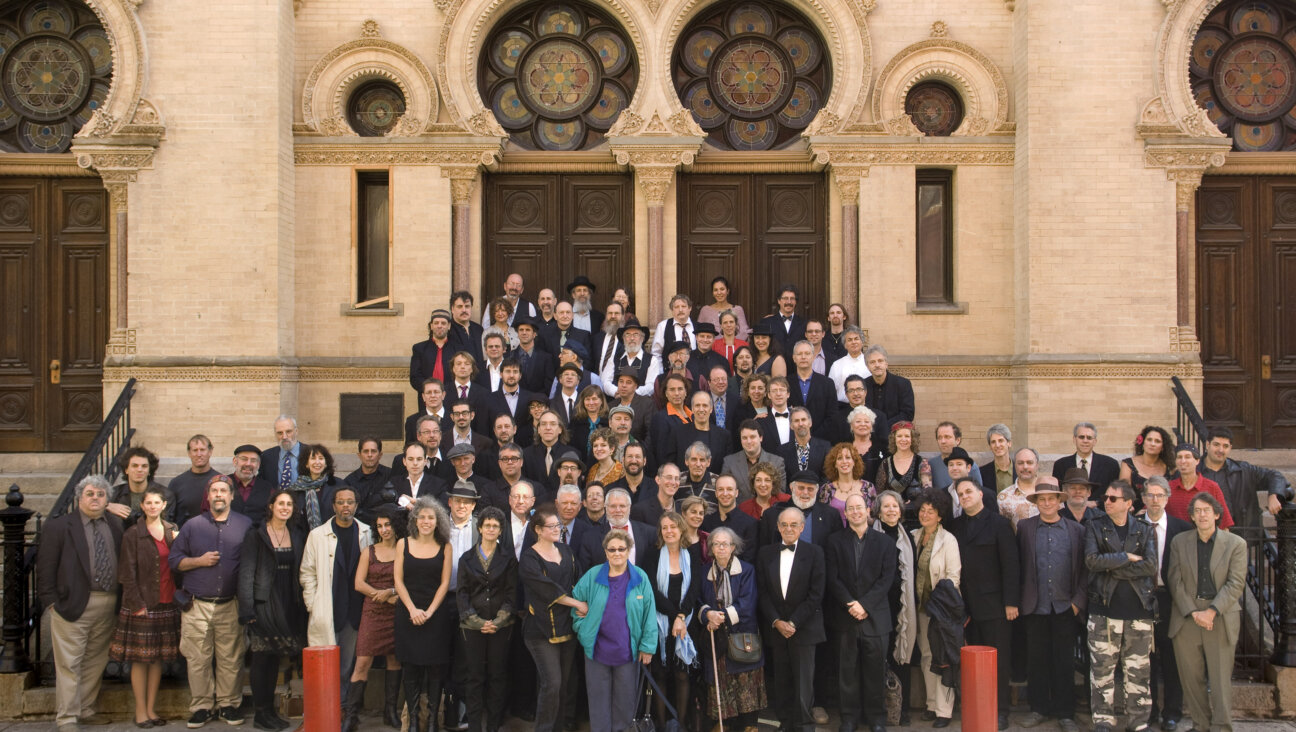Frum Guide To Talking Like an FFB, BT or an FFT

Not Your Grandma?s BFF: Ultra-Orthodox Jews are said to have a distinctive, sing-song intonation in their speech. Image by Getty Images
Sign up for Forwarding the News, our essential morning briefing with trusted, nonpartisan news and analysis, curated by senior writer Benyamin Cohen.
‘As the discussion above has shown,” writes the author of a recent book about linguistic issues, “BTs address this liminality in various ways. Some become FFT — at times even passing as FFB — and others highlight their BT identity.”
Some of you may immediately know who is being talked about. For those who don’t but would like to guess, here’s a simple multiple choice test. Which of the following do the mysterious initials for?
A) Speakers of “Basic Tahitian,” “Free-Form Tahitian” and “Free-Form Basic” Tahitian.
B) Multilingual West African speakers of Bayot and Tura; Fulani, Falor and Tura, and Fulani, Falor and Baga Mboteni.
C) Speakers of southwest German dialects along the Bruchsal-Tubingen line and in the Freiburg-Freudenstadt-Tuttlingen and Friedrichshafen-Freiburg-Basel triangles.
D) American Jews.
It’s a no-brainer, of course. This is a Jewish language column. The obvious answer is D.
A “BT,” for the unenlightened, is a “Ba’al-Teshuvah,” a formerly non-Orthodox Jews who has become Orthodox. An “FFT” is a “Frum From Teshuvah,” a Ba’al-Teshuvah who has gone all the way to ultra-Orthodoxy. An “FFB” is a “Frum From Birth,” an ultra-Orthodox Jew raised as such. The book I have quoted from is “Becoming Frum: How Newcomers Learn the Language and Culture of Orthodox Judaism” (Rutgers University Press, 2012).
Its author is the sociolinguist Sarah Bunin Benor, who has written widely on American Jewish speech. By “liminality” (from Latin limen, threshold, as in “subliminal”), Benor means being situated between different levels of identity. And the main subject of her book is how newly Orthodox Jews in America partly express their religious identity by adopting or not adopting linguistic usages that characterize the communities they have joined.
These usages pertain to several ways in which the speech of Orthodox American Jews differs from the speech of their non-Orthodox counterparts (which itself sometimes differs, although far more slightly, from the speech of non-Jewish Americans). The differences, as Benor points out, exist on a continuum that corresponds closely to that of Orthodox life as a whole — that is to say, the greater the stringency of one’s Jewish ritual observance, the more one’s speech tends to deviate from standard American English. To chart this continuum, Benor divides the world of American Orthodoxy into four basic categories: “Modern Orthodox Liberal,” “Modern Orthodox Machmir” (the Hebrew/Yiddish word has the sense of “strict-constructionist”), “Yeshivish Modern” and “Yeshivish Black Hat.” Although the lines between them are often blurred, each category is marked by a distinct lifestyle and attitude toward Judaism, and — as Benor demonstrates — by its own way of talking.
Benor lists several features that make all Orthodox speech special, such as a high number of loanwords from Hebrew and Yiddish, far more than are found in the vocabulary of non-Orthodox American Jews; Yiddish-influenced phrasing, as in English sentences like “I want you should come right away” or “We’re staying by my in-laws on Shabbos,” and Yiddish-influenced phonetic deviations, such as a full “t”-sound at the end of words and syllables. (An example of this would be saying “right” with the same “t” as is heard in “today,” as opposed to the partially swallowed or glottalized final “t” of American English.)
Two other peculiarities complete Benor’s list. One is a singsong “talmudic” intonation, particularly in sentences with logical reasoning expressed in dependent clauses like, “If you were going to the grocery anyway, why didn’t you buy some bread?” The other is what Benor calls a “hesitation click” — a “tsk”-sound used, like “um,” to give the speaker time to think of what to say next. (Although she is no doubt correct in ascribing this to Israeli influence, she errs in thinking that it is used this way in Israeli Hebrew. The Israeli “tsk” simply means “No,” although when occurring in midsentence in what Binor rightly calls a “corrective click,” this “no” can have the sense of, “On second thought, that isn’t what I really wanted to say, so I’ll try to say it again.” This is probably how, misinterpreted by Orthodox American Jews exposed to Israeli speech, it became an American Jewish “hesitation click.”)
BTs — the abbreviation, like FFB and FFT, is not Benor’s own and is widely used by BTs, FFBs and FFTs themselves — have to work hard at picking up these features if they wish to blend into FFB life; Benor gives several interesting accounts, based on personal acquaintanceship and field work, of how some succeed, some don’t and some don’t always try to, whether it’s because they wish to retain elements of their BT identity or because they simply don’t like to speak what seems to them “incorrect” English. The resistance is rarely to the use of Hebrew and Yiddish words connected to Jewish ritual and study (for example, “daven” instead of “pray,” “learn” instead of “study,” etc.), which seem more authentically Jewish to all BTs; rather, it is to speech habits, like Yiddishized syntax, that have nothing intrinsic to do with Judaism. Yet there are also many cases of what Benor calls “hyperaccommodation,” in which BTs so exaggerate FFB speech habits, as by saying things like borukh hashem, “Bless God,” in every sentence, that they give themselves away as BTs in their very effort to sound like FFBs.
MNW. (More Next Week.)
Questions for Philologos can be sent to [email protected]
















